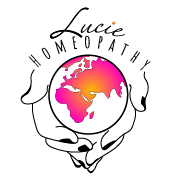WHAT IS HOMEOPATHY?
HOMEOPATHY AS AN ALTERNATIVE APPROACH TO YOUR HEALTH
Homeopathy is a holistic approach to health and disease. It is an intricate, yet beautiful art of treating an individual by engaging their own healing capacity, in order to regain (and maintain) the state of well-being.
Homeopathy has the potential to work on a much deeper level than any other alternative healing modality. This is not to say that the other approaches won’t work as well – it is all dependent on the individual, their symptoms and how they are experiencing them. Holistic treatments can be combined and often work well together. At the end of the day, whatever it takes for the person to feel better is what the focus should be on and sometimes a few different modalities are needed in order to achieve the desired effects.
Homeopathic medicine works well alongside conventional medicine, as it doesn’t interfere with it and can really help with any side effects that are caused by prescription meds for example.
One of the main advantages of using homeopathy is that it can be used to address ailments that happened in past (even long time ago) or those that are hereditary – treating the underlying susceptibility to disease (that has been passed on from their ancestors).
LAWS UNDER WHICH HOMEOPATHY IS BASED
Law of Similars, in other words ‘like cures like’ (similia similibus curantur), which means: a substance that has in its capability to cause a certain illness/symptoms in a healthy person will also be able to cure similar symptoms in a sick person.
In other words: what can make you ill, can also make you well again. The dose of the substance here will be crucial – as Paracelsus quotes: ‘the dose makes the poison.’ it is the magic of the minimal dose in homeopathy to which we adhere to – only take the remedy when it is called for, once you are better you stop (unlike in conventional medicine where you generally have to finish the ‘course’ of meds, which often are very high doses too).
Practical examples of Law of Similars:
When you are cutting up an onion, most people will produce symptoms that are very similar to those of a head cold – runny eyes and nose, which can also be symptoms of an allergic reaction to pollen/hay fever – both of these may be helped by a remedy made from an onion, Allium Cepa.
Another example which probably most of us have experienced is being stung by a stinging nettle (the stinging sensation is caused by formic acid and amines), which produce burning and itching sensations. The remedy made from this plant – Urtica Urens, has (among many other properties) the ability to alleviate stinging/burning pains as well as urticaria (hives) as these are the similar symptoms observed after being stung by a nettle.
Coffea Cruda = coffee, a substance we all know very well and drink it regularly for the reason of being tired or wanting to elevate our mood, mental activity and energy. The negative effect as a result can be that it can also prevent us from sleep (from having too much) and make us hyper with mental over activity. Children can be in a situation like this, for example before a birthday party or Christmas – excited and unable to sleep – similar symptoms to those that coffee can produce, and therefore the remedy made from coffee can help to ameliorate those symptoms. This is the practical example of the theory ‘like cures like’.
Law of Cure, whom we can credit Dr. Constantine Herring for.
He quotes:
This law is the basis of all healing – every cure starts from within out, from the head down and in reverse order as the symptoms have appeared or been suppressed.
‘We don’t catch diseases; we create them by breaking down the natural defences according to the way we eat, drink, think and live.’ This can be called ‘susceptibility’.
This way of thinking is very different to the one of conventional medicine (medicine as we know it today).
Illness is something that is looked at as something that has ‘invaded’ us and needs to be rid of (or cut out).
In homeopathy, we want to work with that disease, find where it originates and how can we prevent that from happening again.
For example cancer – one of the most prevalent diseases of our time.
A tumour – is looked at holistically as an expression of the disease, and the aim would be to allow it to let it finish its course. It is an ‘expression’ or symptom, NOT the disease itself!
Whereas in conventional medicine, the aim would be to cut it out. This approach can be beneficial, if it is followed by using homeopathy to deal with any susceptibilities (to develop tumours) and life style and diet advice to build up strength and vitality.

We heal from within out.
This means we must allow the body to cleanse. In order for the body to eliminate toxins it must be allowed to do so by not suppressing any kind of discharge. Most over the counter medications do suppress discharges and this may cause the toxins to go deeper into the body and cause other weaknesses at a later date.
In conventional medicine, discharges are seen as something that the body needs to be rid of. Homeopathy encourages discharges, as much as they may not be pleasant for the patient; they are a good sign that the body is eliminating toxins out, rather than being suppressed inwards (by medication).
Healing from the head down means, that before we can even begin to heal, we must believe that we can heal. We must not doubt the body’s ability to heal itself.
We heal in reverse order as the symptoms have appeared or been suppressed.
For example, let’s say the last illness you had was a sinus infection and a suppressive medication was used to stop any sneezing, coughing, dripping nose or sinus drainage.
In order for the body to heal itself it must eliminate these toxins and mucous that was suppressed at this time.
The body may stimulate the immune system to create a fever to burn out the toxins, or the toxins may be eliminated through the lungs or bronchioles causing a large amount of phlegm to exit these areas. It may also eliminate through skin causing breakouts/pimples and similar skin eruptions, temporarily.
The conventional medicine focuses on the disease symptoms, i.e. If a person has a runny nose, a decongestant will be given; for pain an analgesic (=pain killer) is prescribed; for constipation a laxative; for anxiety the doctor will very likely prescribe either anti-depressant or a tranquilliser type of medication.
Homeopathy focuses on treating the person, not the disease, going deep – to the root of the ailment, using homeopathic remedies to strengthen the whole being. And as a result of doing that, the Vital (life) Force (the whole being of a person) becomes stronger and able to deal with the disease symptoms. The disease symptoms are manifestations of the mistuned Vital Force and lead the homeopath to the appropriate remedy.
Therefore, homeopathy can literary be used for ANY ailment – from acute to chronic.
You can book a free meet and greet chat below where we can discuss how homeopathy can help you and your family.


